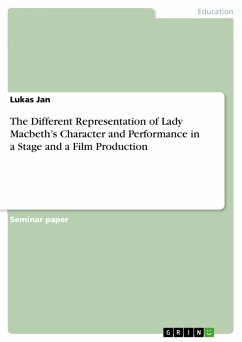Essay from the year 2021 in the subject Didactics for the subject English - Discussion and Essays, grade: 1,5, Trinity College Dublin (School of English), course: Writing the Body, 1690 - 1800: Race, Gender and Power, language: English, abstract: What exactly was the relationship between facial physiognomy and character and how can a doctrine concerned with aesthetics have such socio-cultural ramifications? These are some of the questions which will be investigated in this paper, along with how physiognomy has had a significant impact on eighteenth-century culture and literature. In this context, the works of prose fiction "Oroonoko" (1688) and "A Simple Story" (1791) serve as examples to illustrate the far-reaching implications of physiognomy. In order to grasp the complexity of the dynamic relation between facial physiognomy and character, it is important to first explore the meaning and controversies that are attached to this concept. Next, the role of physiognomy in the manifestation of European beauty standards and in the creation of racial difference facilitates a broader understanding of the repercussions associated with physiognomy. Finally, the ramifications on gender discrimination are also taken into consideration and the approaches that resulted from these dynamics, such as the vogue for masquerade. Overall, the relationship between facial physiognomy and character proves to be an obscure but very relevant socio-cultural force in Early Modern and Late Modern English culture that contributed to the formation and shaping of societal norms and concepts, which is reflected in these centuries' literary works.
Dieser Download kann aus rechtlichen Gründen nur mit Rechnungsadresse in A, B, BG, CY, CZ, D, DK, EW, E, FIN, F, GR, HR, H, IRL, I, LT, L, LR, M, NL, PL, P, R, S, SLO, SK ausgeliefert werden.









